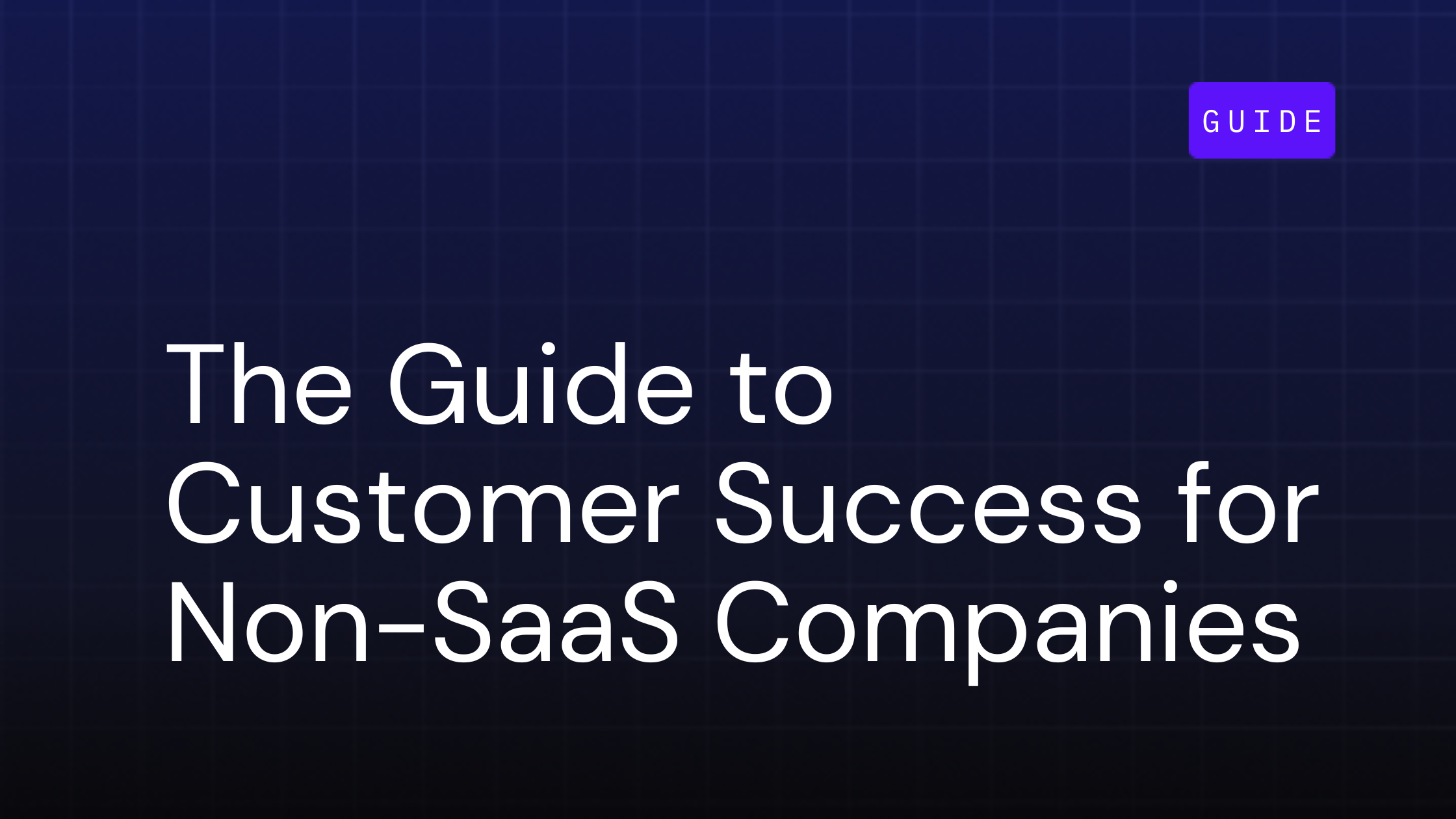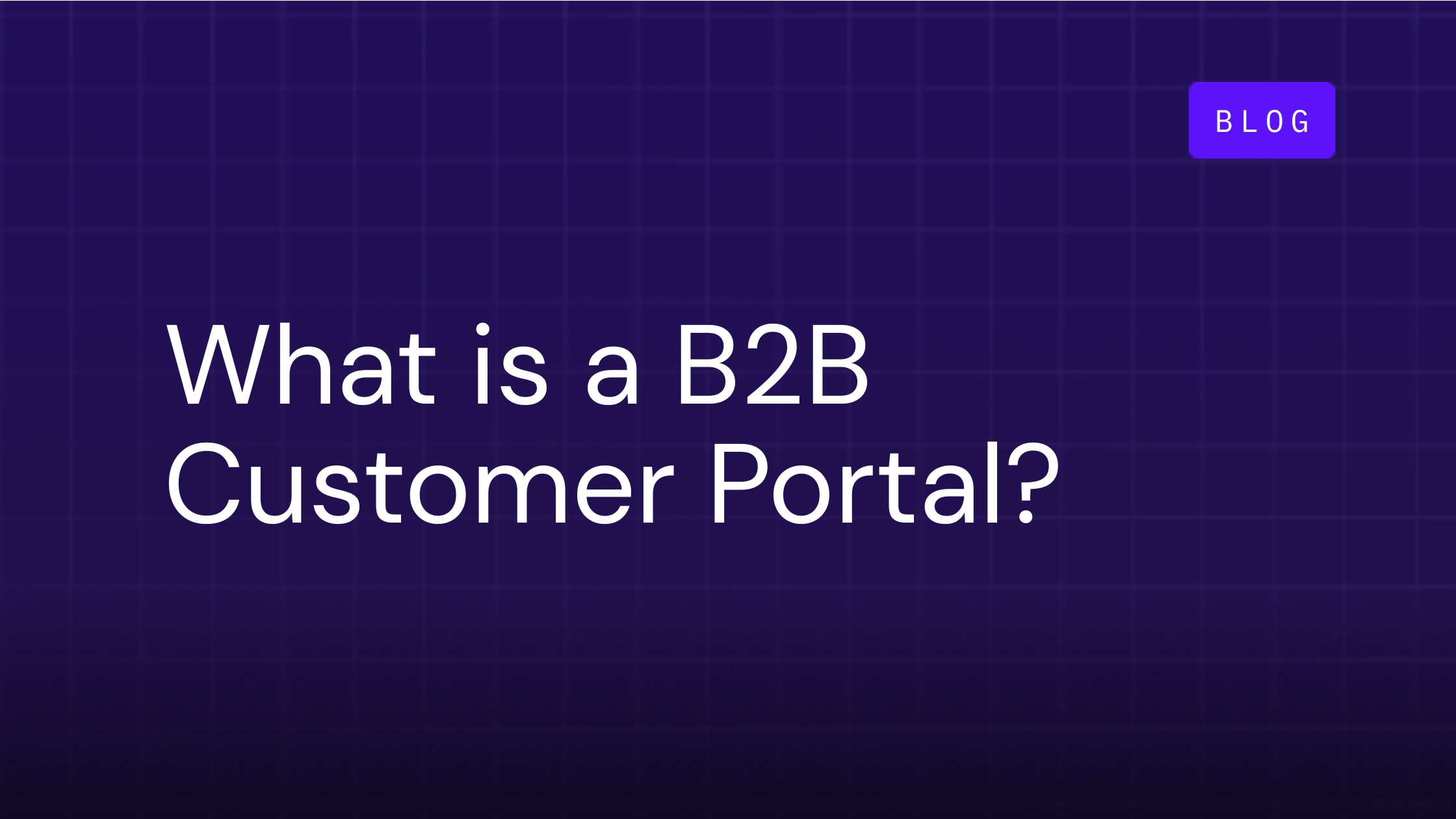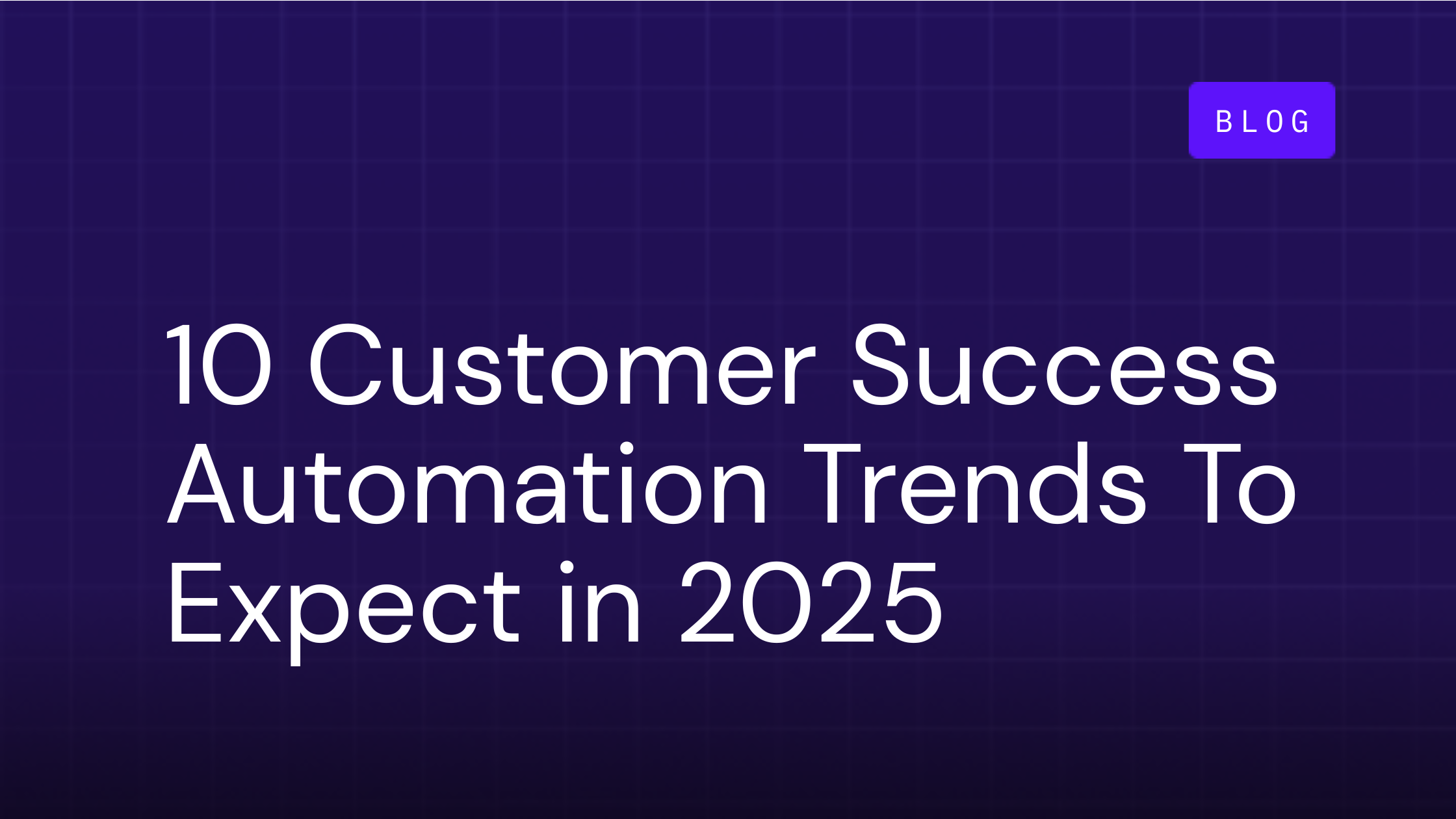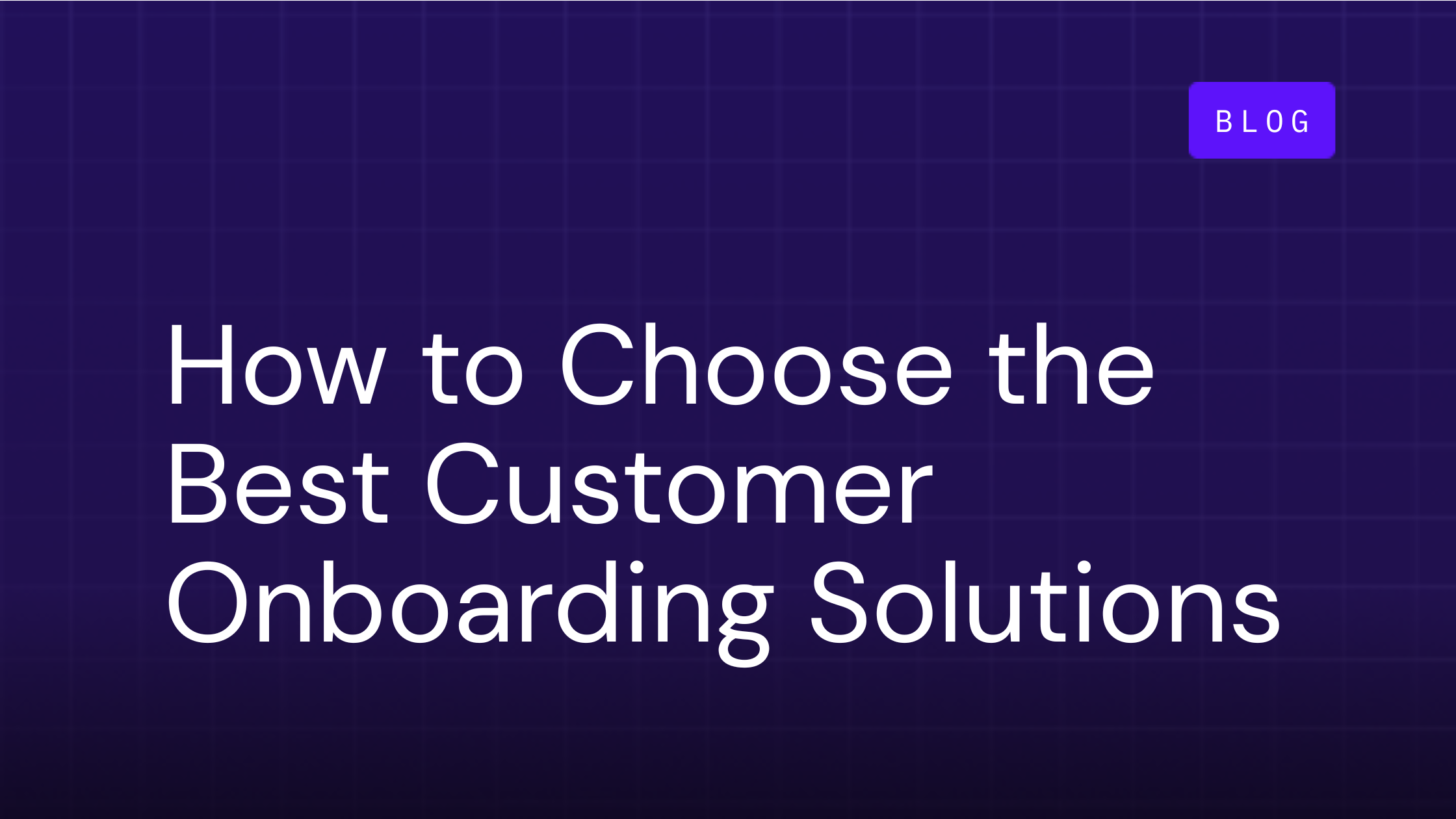The Guide to Customer Success for Non-SaaS Companies
Published: August 9, 2024

Table of Contents
We talk often about customer success for software-as-a-service (SaaS) businesses due to the recurring nature of subscription-based revenue models and the need to maximize customer lifetime value. However, non-SaaS companies like yours might benefit from this approach, especially when building successful customer experiences.
Customer success (CS) goes far beyond conventional customer support or service. It involves onboarding, educating, engaging, and building long-term relationships with those purchasing your products or services.
But why is customer success so important? And how can you implement it in your non-SaaS business? This guide will tell you everything you need to know.
Customer Success in SaaS vs. Non-SaaS Companies
Customer success has been a critical driver for SaaS companies for years, and for good reason. In this model, your business needs to retain subscriptions to generate profits, and CS can help you achieve these goals by ensuring your customers are satisfied and receive the support they need!
CS in a SaaS context encompasses various elements, including:
- Onboarding: When you help customers set up a piece of software, they are more likely to get value from it, leading to increased loyalty and lifetime value.
- Education: Continuing to help customers use the software after onboarding can also boost loyalty and value and prevent negative user experiences.
- Retention: Nurturing customers can improve retention and reduce churn, resulting in higher revenue and more successful outcomes for SaaS brands.
- Advocacy: Customers satisfied with a company will likely recommend it to others in person or online, potentially generating more sign-ups for you.
People often confuse customer success with customer service. However, customer service is reactive because customers contact a company after experiencing a problem. Customer success, on the other hand, is proactive. It's all about you solving issues before your customers realize they have them. That's why it's so important to retain customers for as long as possible in any business.
Building a customer success program provides non-SaaS companies with all these benefits. It allows your enterprise to onboard, educate, and retain customers and improve brand advocacy — just as SaaS companies do now. That said, you'll need to take a slightly different approach for the best results.
As a non-SaaS enterprise, you might depend on one-time sales to boost revenue. While customer retention is still essential, the need to onboard and continuously educate customers might not be as strong as it is for a company that relies on a subscription-based revenue model or has a software for customers to learn and adopt. It might be better to focus your customer success strategy on advocacy or customer satisfaction, which can translate into repeat sales or upselling opportunities.
Data analytics is a big part of customer success for most SaaS companies. That's because it's relatively easy to track how your users engage with software and the features they use. However, generating insights from analytics might not always be possible if you sell or distribute physical products or services, meaning you'll need to rely on customer satisfaction surveys and other traditional methods to gauge success. You'll learn more about all this later.
Benefits of Customer Success for Non-SaaS Companies
Implementing customer success in your enterprise might take a little time. However, it should pay off in the long run. Here are some advantages of this approach:
Boost Revenue
When customers achieve success using your product or service, they are more likely to make additional sales in the future, which can increase revenue. For example, satisfied customers might be open to your cross-selling opportunities or in upgrading to a more expensive product line. Research suggests that a well-designed customer success program can generate a 91% return on investment over three years.
Influence the Direction of Your Company
Customer success guides your business in multiple ways, ultimately making it more successful. You can help customers achieve their goals, which leads to more positive word of mouth and an improved company reputation. That can result in ongoing business growth, which is exactly what you want.
Data insights generated from your customer success program can also steer your company to new heights. For example, learning how buyers interact with your products and the pain points they experience can help you make smarter decisions about future product development.
Enhance Marketing
Insights garnered from your CS program support your marketing initiatives. For instance, discovering what product features customers like best during onboarding can help marketers promote your offerings on different channels. Once customers become advocates for your brand, they can recommend your products on social media and elsewhere, increasing awareness of what you do.
Reduce Costs
Creating and rolling out your customer success program will require an outlay. However, you can make this money back by retaining customers and improving lifetime value. Keeping a customer is less expensive than acquiring a new one, so investing in CS could prove lucrative in the long run!
How To Implement Customer Success in a Non-SaaS Business
There's no golden rule for incorporating customer success into your enterprise. However, here are a few ways to make your CS efforts more successful.
Identify Pain Points by Mapping the Customer Journey
Think about all the interactions customers have with your company at different touchpoints:
- Seeing your commercials on digital platforms or in print
- Visiting your website to learn about your organization
- Engaging with your social media channels
- Purchasing a product or service from your website or over the phone
- Receiving a physical product in the mail
- Receiving welcome emails from your company
The list goes on.
Identifying these interactions can help you understand when customers might experience problems during their journeys.
What if someone has trouble setting up your product? A good customer success strategy recognizes this pain point and makes it easier for people to get value from your product. For example, you can create documentation on your website to help customers during the set-up process. Additionally, nearly 80% of customers are dependent on technical support from solution providers.
Segment Customers
Customer segmentation is a great way to learn more about the people interested in and currently using your offerings. For instance, you can segment customers into groups based on their location, purchasing habits, or other factors and find out information about these cohorts to fine-tune your customer success strategy.
Perhaps customers in a particular age group can't use a product feature. This demographic might require more intensive onboarding from your CS team to improve their knowledge of your product.
Build Relationships
Relationship-building is at the heart of CS, and it's easy to see why. Once you establish connections with buyers, they are more likely to achieve their goals with your product or service.
Building customer relationships takes many forms but might involve:
- Actively listening to customers
- Communicating regularly
- Rewarding loyalty
- Personalizing interactions
Improve Your Customer Service
While customer service and customer success are fundamentally different, one can't exist without the other.
Self-service is one way to enhance your customer support efforts. Instead of buyers contacting your team, they can view technical documentation, FAQs, and other resources directly on your website. Research shows that, across all industries, 81% of customers attempt to take care of themselves before contacting a live representative.
Other ways to enhance customer service include:
- Improving response times — 65% of customers expect someone to respond immediately when contacting a company
- Empathizing with customers who have a problem with your service
- Following up with customers after interactions
- Creating customer service standards that your entire company adheres to
Did you know that 40% of people have stopped doing business with a company due to poor customer service?
How Non-SaaS Companies Can Track Customer Success
As mentioned earlier, SaaS vendors can monitor how users interact with software at different stages of CS, such as after onboarding. Non-SaaS companies specializing in physical products don't have the same luxury. For example, an enterprise selling healthcare tech products can't tell how long users engage with their products or the features they use — at least not with data analytics tools.
Perhaps the simplest way to track customer success for non-SaaS companies is via surveys and other conventional customer feedback methods. Here are some ways to do this:
- Send surveys to customers before and after onboarding. This will help determine whether people are more comfortable using your product after completing your onboarding program.
- Ask customers for feedback after contacting your customer support team. You can discover whether your representatives solved the problem and provided excellent service.
- Use a branded customer portal like OnRamp to track customer feedback at different stages of your CS strategy. Customers can share questions or notes with your team, helping you streamline conversations and determine whether your onboarding, retention, and other efforts are successful.
You might specialize in online courses, e-books, mobile apps, or healthcare digital products. If this is the case, digital analytics tools will help you measure customer success outcomes in a highly granular way. Here are some basic but valuable CS metrics that all companies can measure:
Net Promoter Score
Net Promoter Score (NPS) measures how likely a customer is to recommend your product or service to someone else. How does it work? Start by surveying your customers and asking them a question like, "How likely are you to recommend our product to a friend?" Then, based on their scores, place customers into the following categories:
- Detractors (customers with scores 0-6)
- Passives (7-8)
- Promotors (9-10)
Ignore the passive customers and subtract the percentage of detractor scores from the percentage of promoter scores. This number is your NPS, which can range from -100 to 100. The higher your NPS, the more successful your customer success efforts might have been.
Customer Acquisition Cost
Customer acquisition cost (CAC) is the amount of money it costs to acquire a brand new customer.
To calculate CAC, determine how much your company spends on sales, marketing, and onboarding. Then, divide this amount by the number of new customers you acquired in a particular time frame, such as the previous 30 days.
In other words:
Sales + marketing + onboarding / the number of new customers in the last month = customer acquisition cost
If your CAC is high, it means your company is spending a significant amount of money acquiring new customers. This metric is important for CS because it lets you allocate resources and budget more effectively when onboarding, educating, and retaining customers.
Retention Rate
It takes lots of resources to help customers get more value from your product, so you'll want to generate a return on that investment through customer retention. To calculate this metric, first determine a period of time to look at, such as the last 30 days or last quarter. Then, work out how many customers you had at the start of that period (S), how many customers you gained (N), and how many were still with you at the end of the time frame (E). Finally, enter all that information into this equation:
Retention Rate = ((E – N) / S) x 100
A high retention rate means many people have stuck with your business, which could indicate that your customer success efforts are working. Congratulations!
Customer Success Tools for Non-SaaS Companies
Various tools can simplify CS tasks and make it easier to build genuine relationships with customers. Here are some that you need to know about:
- OnRamp: OnRamp is primarily a customer onboarding platform used in various industries, including B2B SaaS, retail, distribution, and client services. Customer-facing teams rely on it to train and educate new customers and manage onboarding projects, making customer success less of a chore. OnRamp also comes with a customer-facing portal for collaborating with external partners.
- ChurnZero: This platform helps CS teams in both B2B and B2C understand buyers so they can provide better user experiences. It streamlines onboarding, product adoption, customer retention, and account expansion.
- Planhat: Planhat aims to enhance the customer journey for B2B and B2C companies in the SaaS and non-SaaS spaces. It focuses on customer onboarding, customer health, and customer lifecycle management.
Incorporating a Customer Success Platform Into Your Organization
Customer success is no longer the domain of SaaS companies only. Enterprises in almost every industry are slowly adopting this method to achieve more successful business outcomes and help customers get more value from products and services.
Using a CS platform makes your life so much easier. By streamlining customer-facing tasks, you can focus on building relationships and creating meaningful experiences with the people interested in your enterprise. But you'll want to choose a technology that automates customer onboarding, enhances communication, and lets you manage projects. OnRamp lets you do all of that and more. The tool features two UIs — a comprehensive onboarding tool and a customer-facing portal — to improve customer success outcomes.
Related Posts:

What is a B2B Customer Portal?
Customer relationships matter. It's that simple. Research shows that 59% of people will walk away from a brand after several bad...

The Top 10 Customer Success Automation Trends To Expect in 2025
Customer success is more important than ever in the world of B2B SaaS. The average SaaS company spends 6% of its revenue on customer...

How to Choose the Best Customer Onboarding Solutions for Your Team
Onboarding new customers can be a critical moment that determines the success or failure of the relationship. So, as you look to...